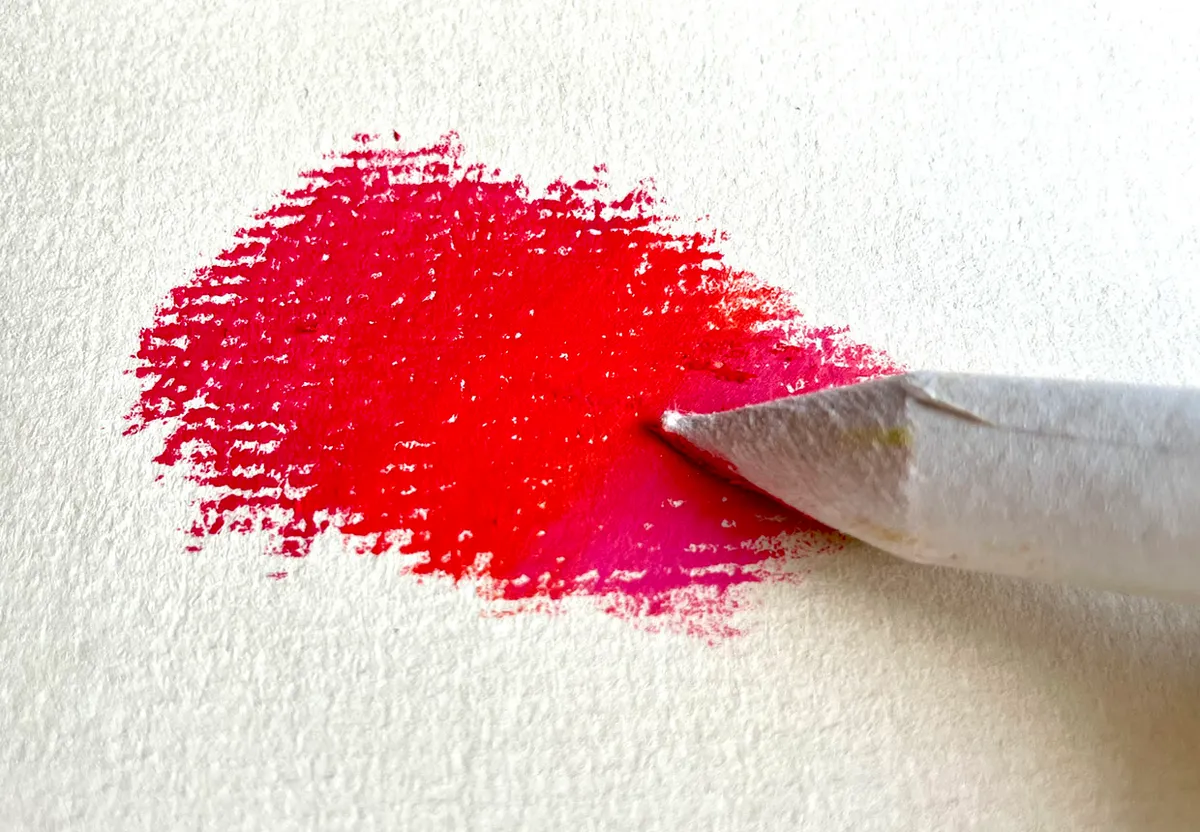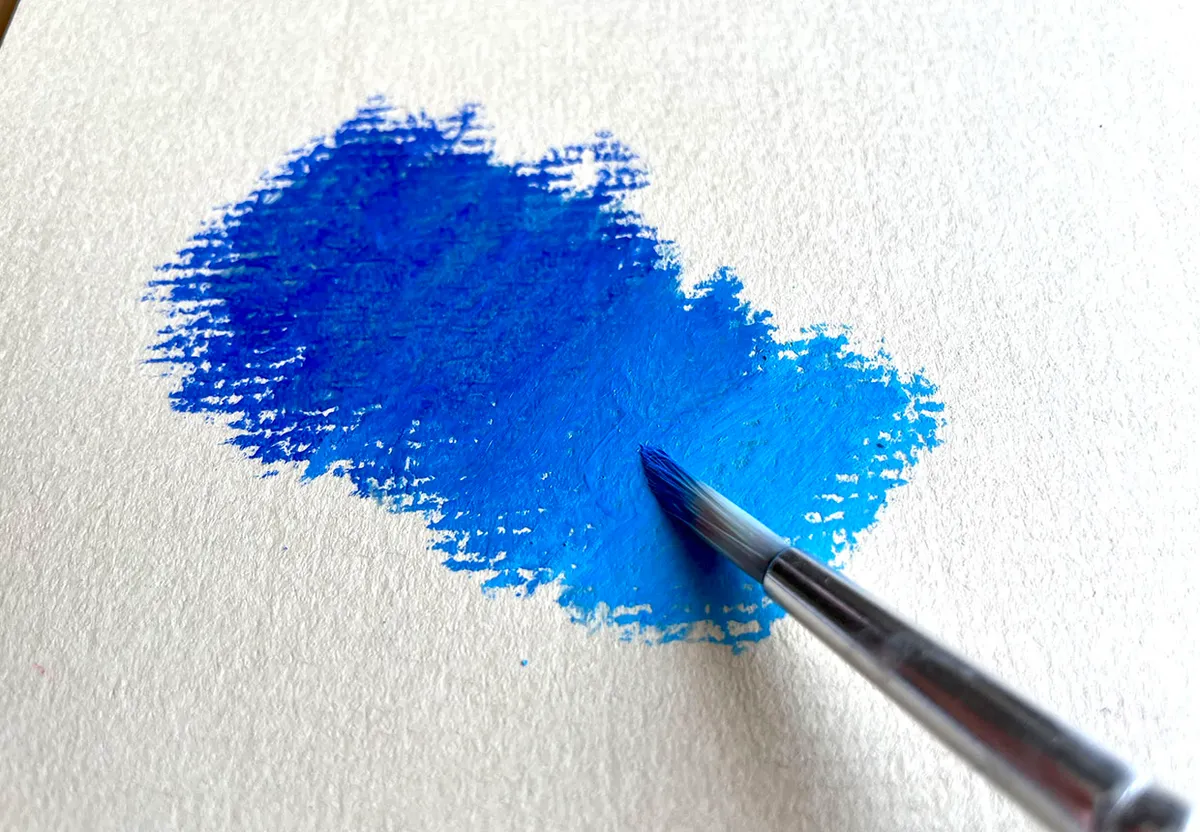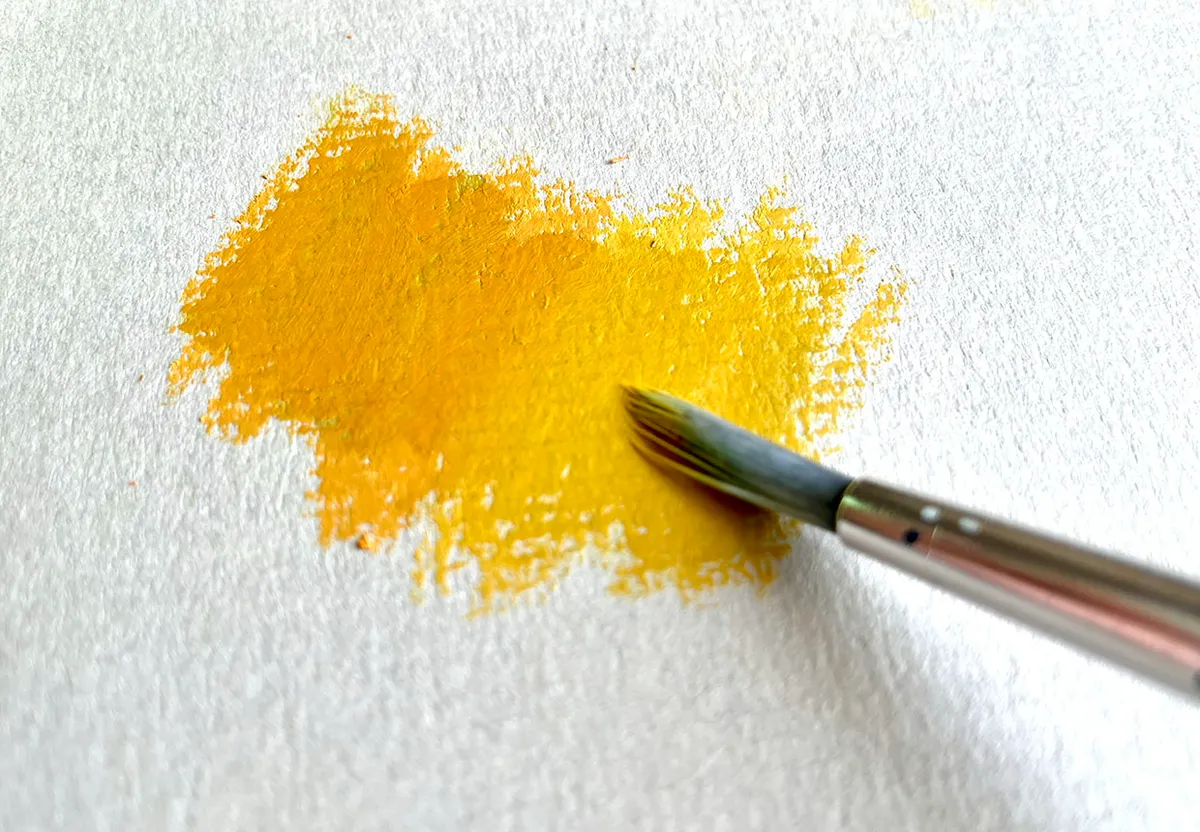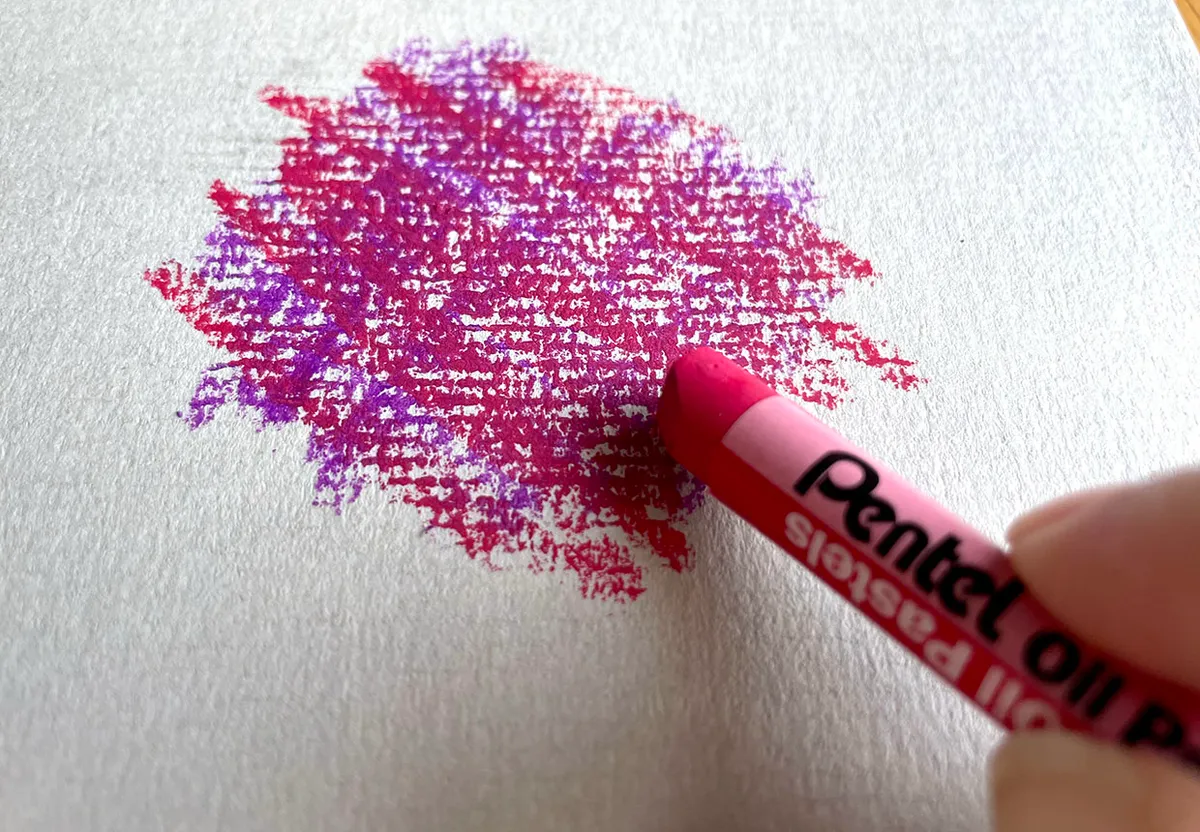How to blend oil pastels for smooth, professional results
One of the best things about using oil pastels is that they’re super blendable – you can create smooth gradients and mix colours together on the paper.
Oil pastels can even resemble oil paintings when applied thickly, with soft edges and rich colours.
There are lots of different ways to blend oil pastels on your paper, so you can test out all the options and find the one which works for you. They all have their own advantages and disadvantages, so it’s worth trying a few methods until you hit on one that you like.
Many of the options are affordable and easy to find, so you don’t have to splash out on extra art materials if you’re a beginner.
Whether you’re an oil pastel novice or an experienced artist, you’re likely to find oil pastel blending techniques that you’ve never tried before!
17 top techniques for blending oil pastels
1. Finger blending
Finger blending is usually the first method that most artists try when working with oil pastels and it can achieve great results!
The main downside is that your fingers can get grubby quickly, meaning that you can contaminate other colours without meaning to.
It’s a good idea to wash your hands regularly if you’re using this technique or keep some wet wipes nearby to clean your fingertips.

2. Blending stump
If you like to keep your hands clean, a blending stump or tortillon can come in handy. These are paper sticks that you can use to smudge the pastels.
When your blending stump gets dirty, you can rub the tip with a kneaded eraser or remove some of the surface using sand paper. Then your blending stump will look good as new and you can get back to work!

3. Paper towels
Paper towels are cheap and readily available. They can be scrunched up or shaped into a point to blend your oil pastels together.
Be careful not to scrub your drawing too hard or the paper will disintegrate.

4. Pipe insulation foam
This might sound like a strange suggestion, but bear with us! Matt Breen, who wrote our complete guide to oil pastels, suggests using pipe insulation to blend your pastels.
Pipe insulation foam can be found in most hardware or DIY stores and can be cut into short sections to make it easier to use. Rub it over your oil pastel drawings to blend the colours together evenly.
5. Baby oil
If you’re a parent, you might already have a bottle of baby oil in your home. If you don’t already have some, baby oil is available from pharmacies and supermarkets and it’s surprisingly cheap.
Baby oil is actually a mineral oil, so it’s perfect for blending oil pastels together! Try not to use too much as it can make your paper oily. Apply a little using a brush or a Q-tip and blend to your heart’s content.

6. Low odour solvent
Low odour solvents are typically used with oil paints. As pastels are also oil-based, you can use solvents on them too.
You can also use turpentine, but this has a very strong smell and can be toxic, so we’d recommend using a low odour alternative.
If you do use turpentine, make sure you’re in a well-ventilated room. If any gets onto your skin, clean it off with water and soap.
You can apply low odour solvent using a brush or a Q-tip to smooth out your oil pastels. Add a little at a time for best results.
When you use it for the first time, test it on a scrap of pastel paper first so you know how it’s going to react with your oil pastels.

7. Mix with a palette knife
You can mix and blend colours directly onto your paper or separately in a palette. A palette knife can be used to mix the pastels in a palette before being transferred onto the paper.
This approach gives you more control over the colour blend, but it can be tricky to apply it evenly on the paper.
8. Kneaded eraser
Every artist should have a kneaded eraser (sometimes called a putty rubber) in their kit. These soft erasers can be shaped using your hands, so you can mould them into a point if you like.
Putty erasers are great for blending – simply rub the eraser lightly over your drawing and see how easily you blend your pastels together!

9. Linseed oil
Transform your oil pastel drawing into an oil painting with a few drops of linseed oil. This loosens the pigment and makes the pastel behave more like a paint! You can even move the oil pastels around with a brush.
Top tip: try dipping your pastels into linseed oil to create softer marks on your paper.

10. Layering colours
You can also blend oil pastels by applying another colour over the top. This can be used to create other effects at the same time.
For example, if your colour is too bright you can blend it and tone down the colour at the same time by applying white, grey or black over the top.
11. Water
Some oil pastels are water soluble, so you can achieve watercolour-like effects by brushing a little water over the top. Be careful not to use too much or your paper will warp!
How to choose the best oil pastel paper
Creating beautiful oil pastel art starts with selecting the right paper for the job. Discover how to choose the best oil pastel paper with Gathered.
12. Cross hatching
Cross hatching is a drawing technique where criss-crossing lines are used to build up areas of colour or shade. It’s also a good way to blend two different oil pastels together in a way that looks almost seamless.
Depending on the oil pastels you’re working with, the lines may still be visible so you may want to smooth them away using your finger, a blending stump, paper, baby oil or low odour solvent.

13. Scumbling
Scumbling is a technique which uses swirling, overlapping lines to layer up different colours. The end result will look textured, but you can rub the surface to achieve a blended finish.
14. Chamois cloth
Polish up your pastel art with a chamois cloth! Chamois cloths are made of soft, flexible leather and they’re perfect for blending.
If your chamois cloth starts to get dirty, you can wash it and reuse it over and over again.
15. Vegetable oil
Like baby oil, vegetable oil is common household product that can be used for blending. A little goes a long way, so don’t go overboard! You don’t want to end up with a greasy drawing.
If you use vegetable oil, you will need to leave your drawing to dry out when it’s done.
While it can be used for blending, it's definitely not as effective as baby oil, linseed oil or solvents.
16. Shapers
Shapers are another tool that oil pastel artists should have to hand. These are shaped like paint brushes with rubber tips.
Shapers can be used for more accurate blending and come in an array of different shapes.
17. Finger cots
Finger cots are designed to protect your digits! They’re often used for medical purposes, but you can get reusable ones that are ideal for artists.
Smudge your pastels with the finger cot, then simply replace it if you want to switch to another colour – or if it gets too grubby.
You’ll be able to blend your oil pastels while keeping your fingers clean.
How to blend oil pastels like an expert
Oil pastels are easy to blend and can be used to produce beautiful tones and gradients in your drawings.
When applied thickly, oil pastels can even resemble oil paintings! They have the same soft edges and rich tones as oil paints, making them a joy to use.
Boost your skills with exciting oil pastel techniques
Blending is just one of the ways you can use oil pastels to create stunning effects.
Learn more ways to improve your artistic style with Gathered’s oil pastel techniques guide.

